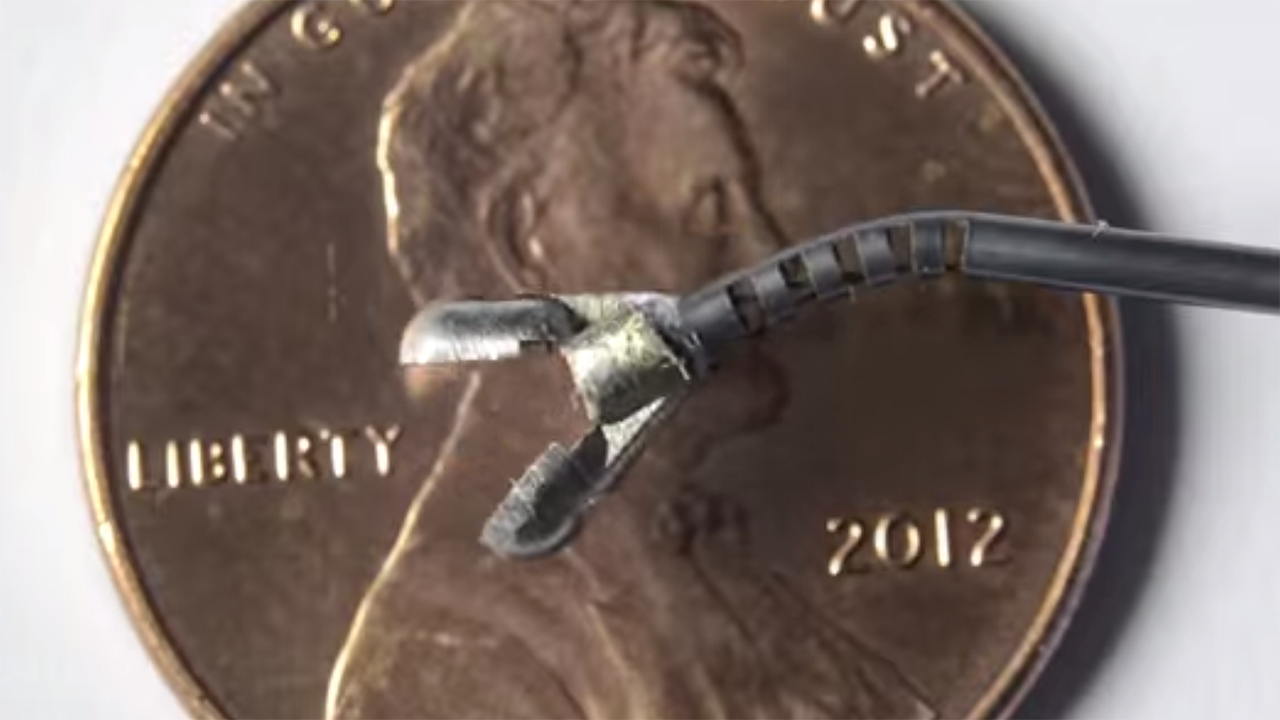Tiny 'mechanical wrist' could allow scar-free surgery
Allows for much greater dexterity

You've probably heard of keyhole surgery, where complex surgical procedures are carried out through just a tiny incision in a patient's body. The next step is called 'needlescopic' surgery, which leaves wounds so small they can be closed with surgical tape.
While the technique has been around since the 1990s, it's extremely difficult and is only performed by a handful of surgeons around the world in a very limited set of circumstances - mostly revolving around getting rid of diseased tissue.
But a group of mechanical engineers has now developed a surgical robot with wrists less than 2mm thick that could revolutionise the practice. It allows the 'steerable needles' used by needlescopic surgeons to bend at the tip, giving doctors far greater dexterity with their tools.
A myriad potential applications
The invention will not only allow for a number of procedures that haven't been possible before, but it'll also permit the technique to be used in parts of the body that were previously beyond its reach - like the nose, throat, ears and the brain.
"Adding the wrists to the steerable needles greatly expands the system's usefulness," said Duke Herrell, a surgeon consulting on the project. "There are a myriad of potential applications in some really exciting areas such as endoscopic neurosurgery, operating within small lumens such as the ear, bronchus, urethra, etc. This would allow us to do surgeries that at present require much larger incisions and may even enable us to perform operations that are not feasible at present." [sic]
A paper describing the discovery was presented at the International Conference on Robotics and Automation.
Get daily insight, inspiration and deals in your inbox
Sign up for breaking news, reviews, opinion, top tech deals, and more.
